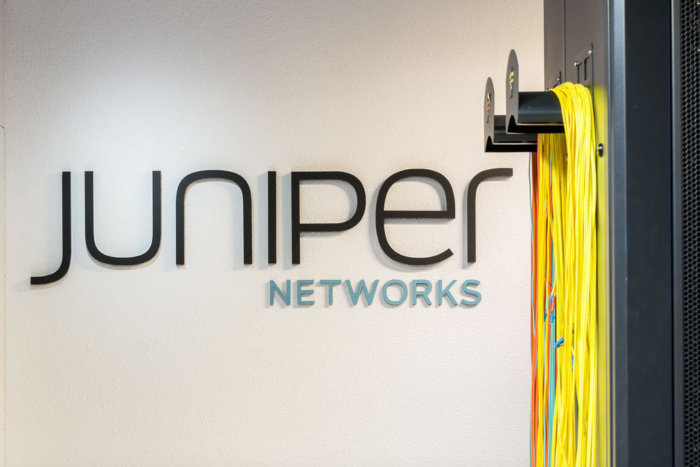Juniper CEO: On the cusp of transforming economics of optical networking
Juniper Networks CEO Rami Rahim believes his company’s recent purchase of silicon-photonics vendor Aurrion may lead to a major cost reduction for high-speed networking gear.
Rahim says he thinks “we are potentially on the cusp of a real breakthrough that will transform the economics of the optics in networking equipment, which obviously will be of great interest to anybody that is building a large, mission-critical network.”
The big benefit for customers will be a better price per bit per second in Juniper’s high-speed networking gear, Rahim said in a phone interview during a break from the company’s NXTWORK 2016 (see highlights of the audio interview below). “It will also help Juniper in maintaining its long-term objective for gross margins of our products.”
Silicon photonics combines integrated circuits with semiconductor lasers to produce chips that can transfer data faster between optical and electronic network segments. The optoelectronic components of networking systems represent more than half the cost of the systems, according to Juniper.
Juniper and Aurrion have been partnering on its optoelectronic technology for more than two years, so Rahim knew Aurrion’s technology well and that it could become what he sees as a game-changer. He says that Juniper “waited until the risks associated with investments in this area were small enough that we believe that the potential for a real breakthrough product was actually very meaningful and that’s when we decided to pull the trigger on acquisition.”
Juniper further hopes to improve the economics of high-speed networking by developing, demonstrating and pushing for standards at the optical layer of networks. Currently inefficiencies in moving optical traffic from one vendor’s gear to another’s and between the IP and optical layers eats up bandwidth – “several tens of percents” of the total bandwidth involved, he says.
“Today,” he says, “because of the fact that the IP and optical layers are managed and administered separately, not as a single layer but as two separate layers with separate teams that look after them, there is wasted or stranded capacity. By combining them and optimizing them and automating them simultaneously you now free up the capacity, and that capacity is really gold in the face of the slowing of Moore’s Law and other performance challenges that we are facing today as an industry.”
In addition to saving costs, such standards will enable customers to avoid vendor lock-in because multi-vendor networks will be much easier to deploy. That’s not how it is today. “Once you have made a decision for one network element, pretty much every element in the optical network needs to be the same vendor because of that lack of interoperability that exists in that space,” he says.
He says that Juniper has engineered just such a multi-vendor network for a European service provider that is now in production. He didn’t say what provider but that its success could prompt standardizing the interfaces used.
More near-term, Rahim says that this year Juniper will make it possible for its switching to enforce policies issued by a centralized policy engine as part of what the company calls its secure fabric. The fabric is part of the larger Juniper Software Defined Secure Network, which is a vision to leverage network elements to gather information, ferret out anomalies and enforce policies “to stop threats in the place that it makes most sense to stop them.”
Next year, Juniper will expand the enforcement points to include Juniper’s broadly deployed MX routers as well as third-party gear, Rahim says.
Next month, Rahim will celebrate his second anniversary as CEO of Juniper, though he has been with the company since it was founded 20 years ago. He says one of the skills he has developed over those years is spotting what technologies Juniper should jump on in order to improve its products and customer satisfaction.
“You don’t want to go too fast,” he says, “because you’ll be ahead of the market but you also don’t want to go too slow and get left behind.”
Join the Network World communities on Facebook and LinkedIn to comment on topics that are top of mind.







